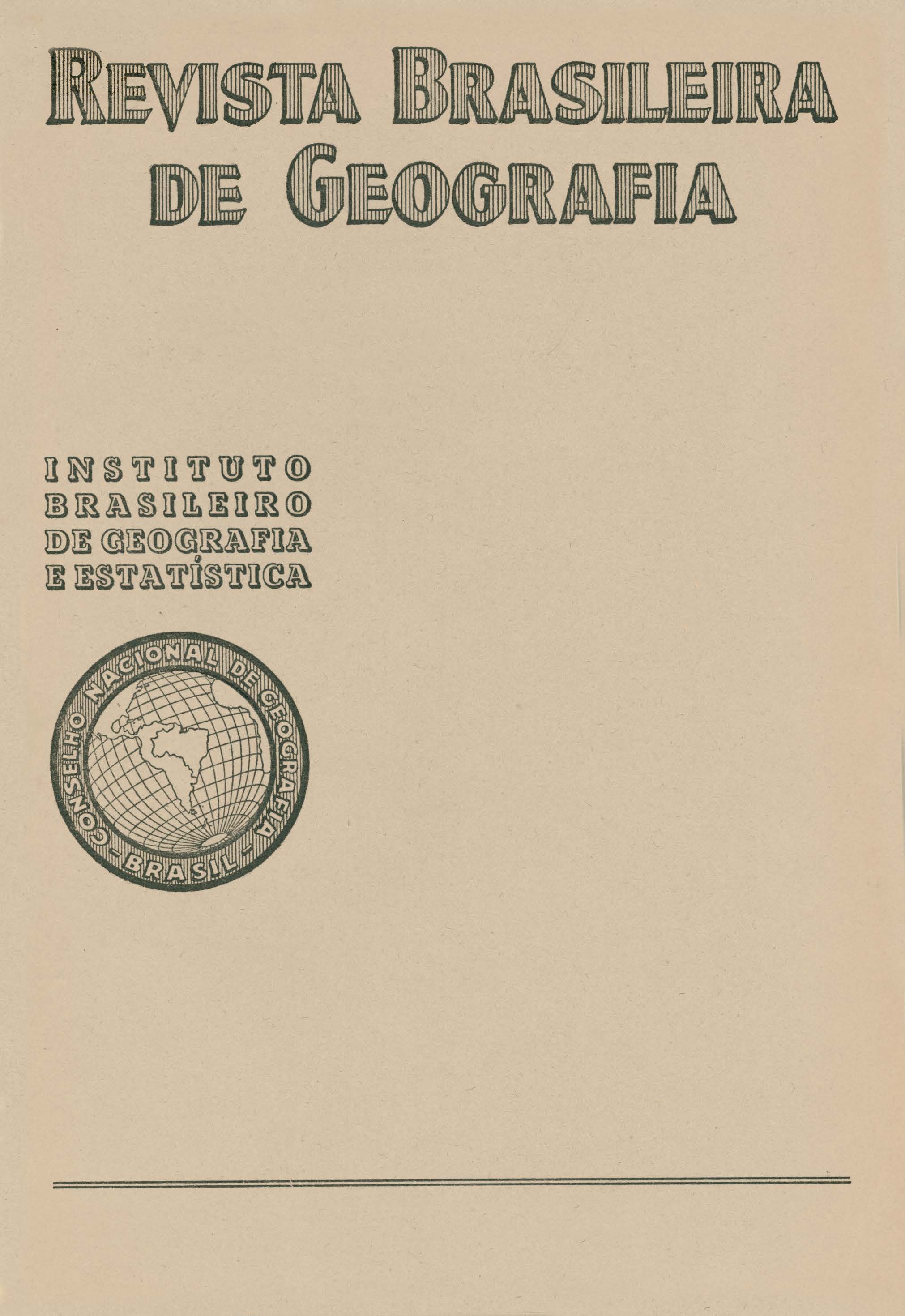Expedição ao divisor de águas Tocantins-São Francisco
Resumo
The author, engineer Gilvandro Simas Pereira, shows in this study how a scientific expetion was organized and carried out to the water-parting of th great basins of the Tocantins and São Francisco rivers, in the Brazilian central plateau.
To begin with he explains the causes which determined this measure on the part of the National Geographical council, in cooperation with the Geological and Mineralogical Division, of the Ministry of Agriculture. Striking differences occurning in maps of other authors are pointed out as revealing an almost complete lack of acquaintance .with the region.
In passing to the executive part of the outlined program, he. shows how the first studies were made at the section of the watershed dividing the States of Goiaz and Minas Gerais and which is comprised between the towns of Formosa and Sitio d'Abadia. The relief in this place consists entirely of "chapadões" (flat-topped heights or horizontal plateaux). These harren tablelands are small in extent and slightly rolling, since the rivers and brooks of the zone are numerous. The densest vegetation, the so-called "cerrado" (thicket), is only to be found near the water-courses.
The work relating to the second stretch having started toward North and following the same divide, presently separating the States of Goiaz and Baía, the party was able to observe the huge "chapa,dões" of the Brazilian central plateau almost absolutely flat, in which only .a small grass is found growing. Here aircraft may Iand safely.
These immense "chapadões" of an almost invariable altitude, between 900 and 950 metres, and extending far beyond the northermost point reached, - the head waters of the Rio Branco -, are lost to view near the valley of the São Francisco river, on the eastern side, being cut into only by the valleys of the feeders of the latter stream. Their poor cover of vegetation is only broken in the vicinity of the same tributaries where "forested banks" are to be seen.
Their soils are of the sandy type, but not exceedingly so, and almost even with the ground – at a depth of Iess than lo centimetres- firm soil is to be found resisting pressure. Such plateaux, from the vicinity of the town of Posse onwards, are bounded on the west by a large scarp over 200 metres high which runs in a North direction as far as a spot never reached by travelers. This scarp, formed by erosion, is of an extraordinary abrupt descent affording passage through only some of the gorges (boqueirões). Farther west, at a lower level, in the territory of Goiaz, it shows an entirely different aspect from those of the "chapadões" of Baía: taller vegetation, a more rolling relief of sandy soil, higher temperature, and· the winds are not so strong.
The author goes on to explain that in leaving behind the towns of Posse, São Domingos and Taguatinga, and the villages of Riachão and Aurora, the work expanded farther west to include the town of Arraias and the vilage of Conceição, ultimatély reaching the town of Dianópolis. Because it was not possible to proceed towards the Jalapão zone, farther north, which will be surveyed next.year, the explorers bore east as far as Barreiras in Baia. In the neighborhood of this town they met with another scarp absolutely identical to the previous one, and which forms the eastern edge of the plateau.
In his conclusions, and after a study of the two types of people inhabiting the region, - the ambitious baiano, who emigrates to the placers of Goiaz seeking quick fortune, and the mangabeiros who, living on the table-topped hills, collect Iatex from the native mangaba~trees thriving so abundantly throughout the Baía zone and exploited for rubber-production, - engineer Gilvandro Pereira shows how mistaken. were the former geographers as to the denomination of the divide in question. Serra Geral, is the name given by the dwellers in the State of Goiaz, who are the only people there viewing a mountain contoured by the continuous and impressive scarp. In the same place there are no. such names as "Serra de São Domingos", "Taquatinga" and so forth. Under these conclusions other features are studied, namely relief, hydrography, fauna and trade.
Ending his study, the author tells of the technical work carried out there: Iand surveying, determination of goegraphical coordinates and magnetic declination, geological studies, etc., and submits a map as a result of the surveys performed.






